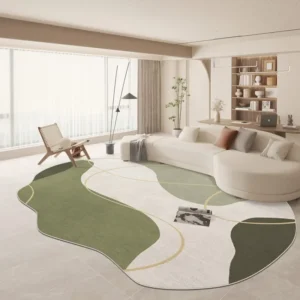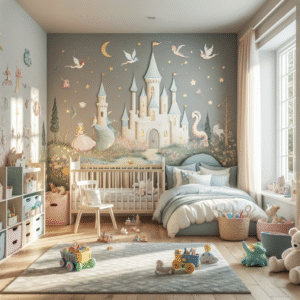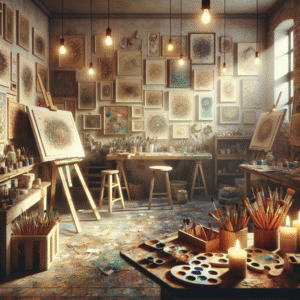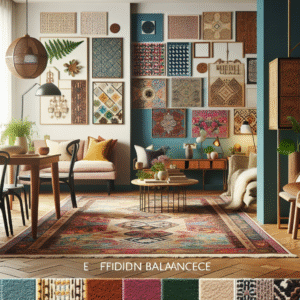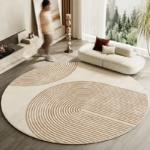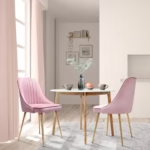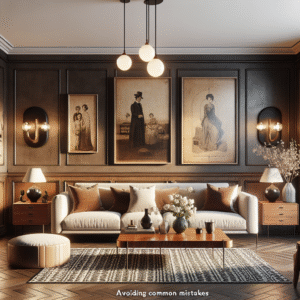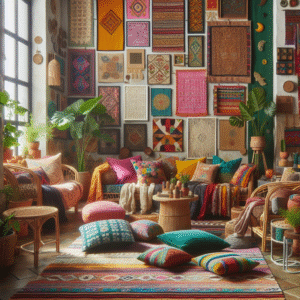As more parents aim to create spaces that are both nurturing and environmentally friendly, the concept of eco-friendly nursery design takes center stage. Have you ever wondered how you can design a nursery that is not just beautiful but also sustainable? With the increasing awareness of environmental issues, it becomes crucial to make conscious decisions that benefit both your baby’s well-being and the planet.
In this article, we’ll explore a variety of eco-friendly nursery design tips that avoid harmful materials, reduce energy use, and embrace sustainable practices. You will learn about selecting non-toxic materials, incorporating natural lighting, utilizing sustainable furniture, and adding organic decor. Each tip will include actionable insights that can transform your nursery into a green space where your child can thrive.
Table of Contents
- Understanding Eco-Friendly Design
- Choosing Non-Toxic Materials
- Sustainable Furniture Options
- Energy-Efficient Lighting Solutions
- Green Decor Ideas
- Creating a Safe and Healthy Environment
- Frequently Asked Questions
- Conclusion & Next Steps
1. Understanding Eco-Friendly Design
Creating an eco-friendly nursery begins with understanding its core principles. At its heart, eco-friendly design prioritizes sustainability, health, and wellness. But what does that mean in practice?
H3: The Importance of Eco-Friendly Design
Building a nursery with sustainable materials helps reduce your carbon footprint. Research shows that homes built with eco-friendly practices consume up to 40% less energy. Additionally, choosing non-toxic finishes improves air quality, promoting a healthier environment for your child.
H3: Key Principles of Eco-Friendly Design
- Sustainability: Use materials that are renewable and recyclable.
- Health: Avoid toxic substances that may harm your baby’s health.
- Resource Efficiency: Use resources wisely to minimize waste.
2. Choosing Non-Toxic Materials
Non-toxic materials are critical when designing your nursery. Most new paint, furniture, and textiles emit volatile organic compounds (VOCs) that can pose health risks.
H3: Selecting Non-Toxic Paints
When choosing paint, look for zero-VOC options. These paints reduce harmful emissions and are safe for sensitive environments. Additionally, consider using natural finishes, such as beeswax or plant oils, for wood and other surfaces.
H3: Eco-Friendly Flooring Choices
Carpets can trap allergens and chemicals. Opt for natural fibers like jute or wool for flooring. If you prefer hard floors, bamboo or cork are sustainable alternatives that are durable and stylish.
3. Sustainable Furniture Options
Furniture can significantly impact your nursery’s sustainability. Look for pieces made from recycled materials or sustainably sourced wood.
H3: Secondhand and Upcycled Furniture
Consider purchasing secondhand furniture, which reduces waste and adds character. If you’re feeling crafty, upcycling older furniture can be a fun and rewarding project.
H3: Certifications to Look For
Ensure that your furniture is certified by organizations like the Forest Stewardship Council (FSC). This certification guarantees that the wood used comes from responsibly managed forests.
4. Energy-Efficient Lighting Solutions
Lighting is often overlooked in eco-friendly design, but it plays a significant role in energy consumption.
H3: Opt for Natural Light
Maximize natural light by positioning your nursery near windows. Use sheer curtains to diffuse sunlight without darkening the space. Studies indicate that natural light promotes better mood and sleep patterns for infants.
H3: Energy-Efficient Bulbs
When artificial lighting is necessary, opt for LED bulbs. They last longer and consume significantly less energy compared to traditional bulbs, cutting down your energy expenses and reducing your environmental footprint.
5. Green Decor Ideas
Decor can make or break your nursery’s appeal, but it can also contribute to its eco-friendliness.
H3: Choose Organic Textiles
Opt for certified organic cotton for bedding and curtains. These textiles are grown without harmful pesticides, ensuring a safer environment for your baby.
H3: Nature-Inspired Themes
Incorporate natural elements into the decor. Use plants as part of your design, choosing non-toxic varieties that help purify the air. A touch of greenery can create a calming atmosphere.
6. Creating a Safe and Healthy Environment
Your nursery should be a sanctuary for your child. Here are ways to enhance safety and well-being.
H3: Air Quality Considerations
Ensure proper ventilation in the nursery to maintain good air quality. Use air purifiers that are HEPA-certified to reduce allergens and toxic particles in the air.
H3: Safety Standards
Make sure all furniture meets safety regulations. Look for certifications that ensure that the materials used are safe for children.
7. Frequently Asked Questions
What are the benefits of using eco-friendly materials in my nursery?
Using eco-friendly materials reduces your baby’s exposure to harmful chemicals, promotes sustainability, and often provides a healthier indoor environment.
How do I choose child-safe paints?
Choose paints labeled as zero-VOC or low-VOC. Look for certifications from credible organizations to ensure safety.
Are there eco-friendly options for nursery furniture?
Yes, consider sustainable furniture made from reclaimed or FSC-certified wood, or explore options in secondhand markets.
How can I create a sustainable nursery on a budget?
Consider upcycling furniture, using secondhand decor, and prioritizing DIY projects to keep costs down while being eco-conscious.
What live plants are safe for a nursery?
Spider plants, Boston ferns, and peace lilies are some non-toxic plants that help purify the air.
8. Conclusion & Next Steps
Creating an eco-friendly nursery is a rewarding journey that benefits both your child and the environment. By choosing non-toxic materials, sustainable furniture, and energy-efficient solutions, you can design a nurturing space that aligns with your values.
As you embark on this venture, remember that every small change contributes to a larger impact. Start by implementing one or two of the tips discussed and gradually incorporate more eco-friendly practices into your nursery.
If you found this guide helpful, consider checking out our articles on DIY eco-friendly furniture and energy-saving home tips. Together, let’s make a positive difference for our future generations.
Content Disclaimer
The information provided in this article is for educational purposes only. It is not professional advice, and you should consult experts for personalized guidance. Results may vary based on individual circumstances.
Categories
- Accent Walls & Ceilings (12)
- Art Curation & Gallery (26)
- Bedding Style Trends (41)
- Bedroom Makeover (31)
- Bohemian & Eclectic Styles (12)
- DIY & Budget-Friendly Decor (11)
- Eco-Friendly Design (12)
- Furniture Care (30)
- Home Decor & Design Ideas (101)
- Home Wellness Spaces (11)
- Integrated Outdoor Living (10)
- Kids and Nursery Decor (12)
- Living Room Decor (31)
- Minimalist & Japandi Style (14)
- Mix & Match Techniques (30)
- Modern & Contemporary Design (11)
- Rug Sizing & Placement (30)
- Seasonal Home Decor (33)
- Small Space Solutions (15)
- Wall Art & Painting Tips (33)
Recent Posts
Recent Comments
Archives
Product Gallery
-
 Large Area Green Rugs for Bedroom Nordic Living Room Decoration Shaped Carpet Irregular Plush Lounge Rug Home Thick Washable Mat Rated 5.00 out of 5$57.07 – $359.83Price range: $57.07 through $359.83
Large Area Green Rugs for Bedroom Nordic Living Room Decoration Shaped Carpet Irregular Plush Lounge Rug Home Thick Washable Mat Rated 5.00 out of 5$57.07 – $359.83Price range: $57.07 through $359.83 -
 Nordic Style Rugs for Bedroom Morandi Living Room Decoration Carpet Large Area Geometry Lounge Rug Home Cloakroom Non-slip Mat Rated 5.00 out of 5$40.98 – $620.81Price range: $40.98 through $620.81
Nordic Style Rugs for Bedroom Morandi Living Room Decoration Carpet Large Area Geometry Lounge Rug Home Cloakroom Non-slip Mat Rated 5.00 out of 5$40.98 – $620.81Price range: $40.98 through $620.81 -
 Irregular Shapes Living Room Decoration Carpet Modern Style Rugs for Bedroom Home Thicken Plush Rug Fluffy Soft Lounge Floor Mat Rated 4.75 out of 5$58.00 – $360.83Price range: $58.00 through $360.83
Irregular Shapes Living Room Decoration Carpet Modern Style Rugs for Bedroom Home Thicken Plush Rug Fluffy Soft Lounge Floor Mat Rated 4.75 out of 5$58.00 – $360.83Price range: $58.00 through $360.83





